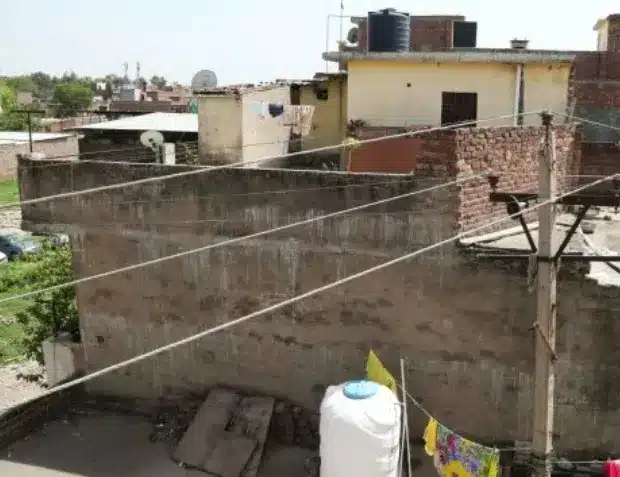What’s in today’s article?
- Why in News?
- What is Digital Bharat Nidhi (DBN)?
- What are the Features of Digital Bharat Nidhi (DBN)?
- Underutilisation of USOF
Why in News?
In a fresh attempt at increasing telecom connectivity in rural areas, the Department of Telecommunications (DoT) has released draft rules to operationalise the Digital Bharat Nidhi.
What is Digital Bharat Nidhi (DBN)?
- Background – Universal Service Obligation Fund (USOF)
- The USOF was established to provide telecom services in remote and rural areas at affordable prices through a universal access levy, a percentage of revenue earned by operators under various licences.
- In other words, USOF is a pool of funds generated by a 5 per cent Universal Service Levy charged upon all the telecom fund operators on their Adjusted Gross Revenue (AGR).
- The goal is to use this money to help expand telecom networks in remote and rural areas.
- Private companies might avoid these areas because they don’t make much profit there.
- USOF was given statutory status in December 2003 through amendments to the Indian Telegraph Act (now replaced by the Telecom Act, 2023).
- About
- The DBN was established through the Telecommunications Act, 2023.
- It would replace the erstwhile Universal Service Obligation Fund (USOF).
What are the Features of Digital Bharat Nidhi (DBN)?
- Transfer of funds
- According to the Telecom Act, telecom companies’ contributions to the Digital Bharat Nidhi (DBN) are first credited to the Consolidated Fund of India (CFI).
- CFI receives all government revenues, including loans and repayments, and covers government expenses.
- The Centre will transfer the collected funds to the DBN periodically.
- According to the Telecom Act, telecom companies’ contributions to the Digital Bharat Nidhi (DBN) are first credited to the Consolidated Fund of India (CFI).
- Fund Utilization
- Funds from the DBN will be used to:
- Promote telecommunication services in underserved rural, remote, and urban areas.
- Fund research and development of telecom services, technologies, and products.
- Support pilot projects and provide consultancy and advisory assistance to improve connectivity.
- Introduce new telecom services, technologies, and products.
- The DBN will fund projects to provide targeted telecommunication access for underserved groups like women, persons with disabilities, and economically and socially weaker sections.
- Funds from the DBN will be used to:
- Appointment of Administrators
- According to draft rules from the DoT, the Centre will appoint an “administrator” to select “DBN implementers” through bidding or applications. This administrator will decide how to provide funding on a case-by-case basis, which may include full, partial, or co-funding, as well as market risk mitigation and risk capital.
- Telecom services on an open and non-discriminatory basis
- DBN implementers receiving funding must share and provide telecom networks and services on an open and non-discriminatory basis, following the administrator’s instructions.
- Criteria for schemes and projects funded by the DBN
- The schemes and projects funded by the DBN must meet criteria such as introducing:
- next-generation telecom technologies in underserved areas,
- improving affordability of services, promoting innovation and research,
- commercializing indigenous technologies,
- developing relevant standards, and
- encouraging telecom start-ups, including equipment manufacturing.
- The schemes and projects funded by the DBN must meet criteria such as introducing:
Underutilisation of USOF
- Since its establishment in 2003, the USOF has faced criticism for underutilization.
- Between 2017 and 2022, the government collected Rs 41,740 crore from telecom companies for the USOF but used only Rs 30,213 crore (about 72%).
- Notably, in 2019-20, out of Rs 7,962 crore collected, only Rs 2,926 crore was used.
- In FY23, expenditure estimates were revised to Rs 3,010 crore, significantly lower than the budgeted Rs 9,000 crore.
A major reason for this underutilization is the underspending on the BharatNet project for village fibre connectivity.
Q.1. What is Adjusted Gross Revenue (AGR)?
Adjusted Gross Revenue (AGR) refers to the gross revenue of telecom companies after accounting for certain deductions. It includes all revenues earned from telecom services but excludes revenue from non-telecom sources and specific deductions like roaming charges and interconnection fees.
Q.2. What are the functions of Department of Telecommunications (DoT)?
The Department of Telecommunications (DoT) regulates telecom services in India, formulates policies, allocates spectrum, grants licenses, enforces standards, promotes development and research, manages international cooperation, and ensures security in communication networks.
Source: What is Digital Bharat Nidhi, govt’s fresh attempt at improving rural telecom connectivity? | Hindustan Times
Last updated on December, 2025
→ Check out the latest UPSC Syllabus 2026 here.
→ Join Vajiram & Ravi’s Interview Guidance Programme for expert help to crack your final UPSC stage.
→ UPSC Mains Result 2025 is now out.
→ UPSC Notification 2026 is scheduled to be released on January 14, 2026.
→ UPSC Calendar 2026 is released on 15th May, 2025.
→ The UPSC Vacancy 2025 were released 1129, out of which 979 were for UPSC CSE and remaining 150 are for UPSC IFoS.
→ UPSC Prelims 2026 will be conducted on 24th May, 2026 & UPSC Mains 2026 will be conducted on 21st August 2026.
→ The UPSC Selection Process is of 3 stages-Prelims, Mains and Interview.
→ UPSC Result 2024 is released with latest UPSC Marksheet 2024. Check Now!
→ UPSC Prelims Result 2025 is out now for the CSE held on 25 May 2025.
→ UPSC Toppers List 2024 is released now. Shakti Dubey is UPSC AIR 1 2024 Topper.
→ UPSC Prelims Question Paper 2025 and Unofficial Prelims Answer Key 2025 are available now.
→ UPSC Mains Question Paper 2025 is out for Essay, GS 1, 2, 3 & GS 4.
→ UPSC Mains Indian Language Question Paper 2025 is now out.
→ UPSC Mains Optional Question Paper 2025 is now out.
→ Also check Best IAS Coaching in Delhi

















